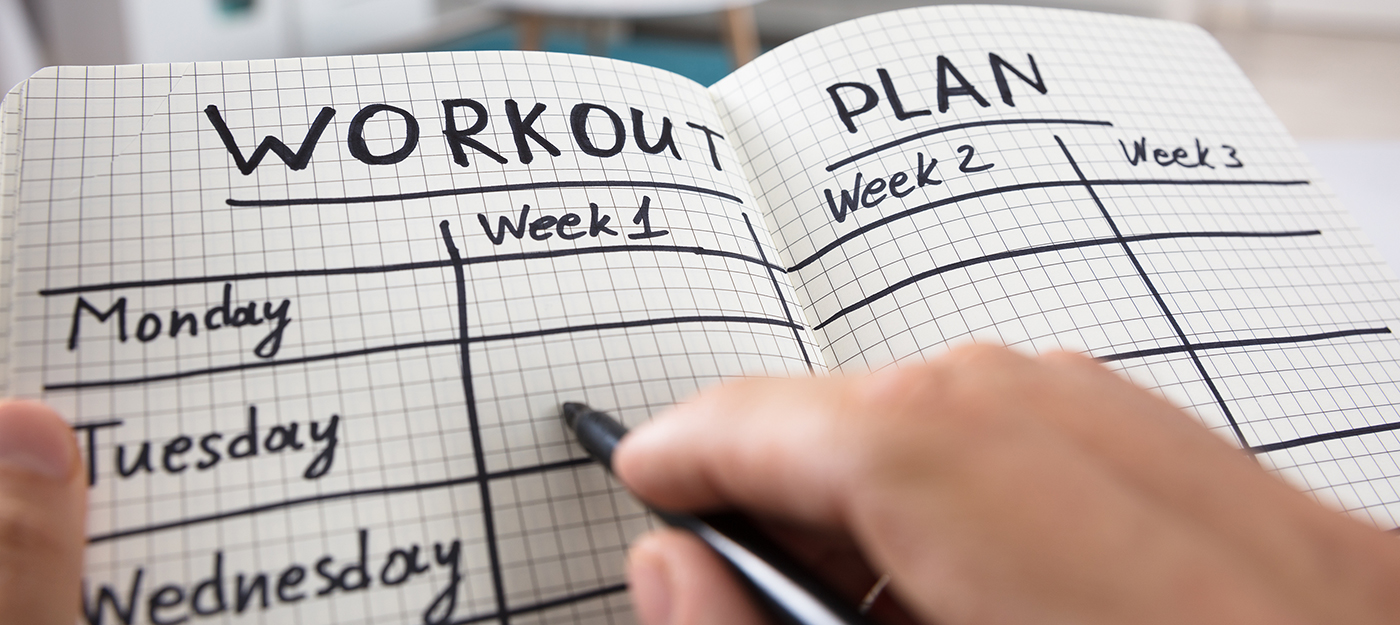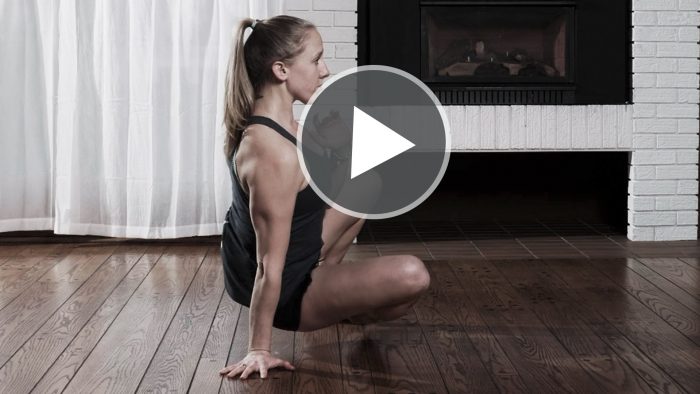
Moving Beyond 3 Sets of 10
If you’ve ever followed a resistance training program in the gym, you’ll be no stranger to the concept of sets and repetitions. In fact, one of the most common questions we get asked all around the world is: “How many sets and repetitions should I do?”
In truth, it’s always been a challenging question to answer. This is not because we don’t know; it’s because the response requires us to convey a conceptual shift in the way we view movement and exercise prescription. We sat down with Canadian Master Instructor, Frèyja Spence, to dig deeper into the concept of programming for Animal Flow.
Sets, Reps and Animal Flow
AFHQ:
Why isn’t Animal Flow practice typically prescribed using sets and reps?
Frèyja:
When we talk about sets and repetitions in fitness, we’re usually applying that to loaded exercises (like a shoulder press or deadlift), or more classic bodyweight exercises (such as push ups or pull ups. We also typically categorize these movements under specific types of training such as strength, power, endurance or hypertrophy (increasing muscle size). However, when you look at a skill like Animal Flow it becomes much more challenging to determine which type of training it fits into. It can tick a lot of different boxes.
An Animal Flow session can be a workout but we also commonly refer to it as a practice, much like martial arts or dance or yoga. This is because there’s a strong focus on developing the abilities required to perform the skills of each movement.
AFHQ:
Why is the fitness industry so concerned with the idea of ‘three sets of 10 reps’? Where did it come from?
Frèyja:
It originated in the 1940’s as a result of the work of an army physician, Dr. Thomas DeLorme. He identified a rehabilitation protocol that utilized multiple sets of 10-repetition maximum lifts. DeLorme then modified this to three sets of 10 repetitions. One set was conducted at 50% of the most they could lift for 10 reps, a second set was at 75% and the final was at 100%. Each set got progressively heavier so he called it ‘Progressive Resistance Exercise.’
Over the years this approach was adapted and he eventually joined forces with another physician, Dr. Arthur Watkins. Together they continued to refine the method, conducted research that showed evidence of their protocol being superior for gaining muscle mass, and changed the face of resistance training forever.
AFHQ:
That sounds pretty compelling. How does it hold up against current day research?
Frèyja:
Now we realize that we can gain muscle mass across a variety of loads and repetition ranges. You could give someone bodyweight exercise, and if they’re new to it and have the genetic potential, they’ll experience hypertrophy.
AFHQ:
It sounds as if the rep schemes are useful in loaded exercise but more challenging to accurately match up when you’re looking at skill-based practice.
Frèyja:
We don’t use external load in Animal Flow. When you then add the complexity of the task that is being learned, it becomes apparent that you can’t use something like three sets of 10 for a specific outcome.
Programming for a Beginner Flowist
AFHQ:
So, if you’re not looking at that type of outcome for the average person, how do you know where to start a new client as far as their Animal Flow journey?
Frèyja:
I use categories instead. Is my client a beginner, intermediate or advanced mover? What type of physical activity are they used to and how closely does that match the demands of Animal Flow? For instance, if I have an advanced lifter with no bodyweight movement background, I’ll still identify them as a beginner Flowist. They’ll be able to express power and strength so they’ll possibly progress quickly, but they’re not used to being on their hands. This means that they’ll still require adaptation time; time for their body to get used to the specific demands of being on the ground.
AFHQ:
What would you suggest a session include for someone starting out with Animal Flow?
Frèyja:
Here’s my suggestion.
- Pick a duration that you want to practice for. I suggest starting with around 15-20 mins.
- Perform 3-5 mins of Wrist Mobilizations.
- Pick 4-6 skills that you want to learn and improve. This could be 1-2 Traveling Forms, 1-2 Switches and Transitions, and 1-2 Form Specific Stretches.
- Spend the rest of the time drilling each movement for 30-60 seconds. Take rest in between as needed.
- When your time is up, stop. It can be tempting to keep going but recovery is important. It’s the phase where the benefits from the training, known as adaptations, can occur.
- If you feel fatigued before the pre-set time is over and your technique is being impacted, stop. Next time try reducing the duration slightly or take more rest in between movements.
AFHQ:
That doesn’t sound like a lot of practice time. Will that duration allow people to see improvements?
Frèyja:
The best way to improve in skill development is consistent practice that focuses on the right areas. I want my clients to be able to repeat the effort sooner rather than later. If they’re too sore or they injure themselves from doing too much, too soon then they can’t repeat the efforts until much later than planned. We want the tissues to adapt so that we can repeat the effort and progress faster as a result.
Skill Development and Progress
AFHQ:
What are some of the factors you consider that help you determine whether someone is ready to progress?
Frèyja:
I’m always looking at the technique. Nothing should ever be done at the expense of excellent technique. If that’s good, then I can adjust tempo (encouraging both slow and fast speed of movement at different times) and time under tension (TUT). TUT is the duration spent completing a movement. Tempo and TUT go hand in hand – the slower the tempo, the longer the TUT.
I’m also interested in how well someone is controlling their body through space–are they landing lightly and with control? If I see that begin to break down during the session, I know that they’re fatiguing. With skills, it’s important to practice fresh so that the nervous system has the best chance to learn a task. I tell my students and clients that technical proficiency reigns supreme. If you’re landing wildly or loudly, or you’re not breathing, then you’re no longer being efficient at dispersing the force of your body. You might have wanted to spend another five minutes on it but that’s really where you need to stop.
Weekly exposure is also something that plays a role. How well you recover is a sign of how well prepared you were for the task at hand. So we need to find the amount that allows you to practice frequently but recover well.
If all of those variables are managed, then I know I can progress someone because they’re tolerating what we’re doing. Once you’re tolerating the demands well, you can progress to more advanced Flows, longer duration sessions and more challenging drills.
AFHQ:
What else do you wish more people knew about training for skill development versus more traditional gym-style exercise?
Frèyja:
To succeed in complex skills, whether that’s handbalancing or Animal Flow or something else, we need to break up with the three sets of 10 mentality. Instead, focus on duration and quality of the practice. I also encourage my clients to drip feed their skill practice into their day by embracing ‘walk bys’. I walk by my gymnastics rings and I do a pike or a pull. Maybe you might walk past a spot in your house and practice a Tuck Balance or a Side Kickthrough.
Ultimately, building in the habit of movement throughout the day is what it takes to create a well-functioning human body–not just doing three sets of 10 reps in the gym a couple of times a week.
Try this short and simple Side Kickthrough drill with Frèyja from Animal Flow On Demand.
Want more drills like this one? Join Frèyja, Mike, Rich, Kathy and other Master Instructors at Animal Flow On Demand. Activate your 14 day free trial today and Flow any time, anywhere.


